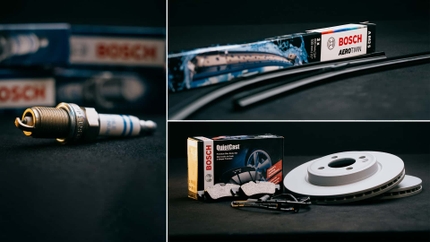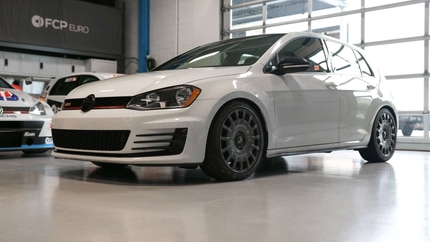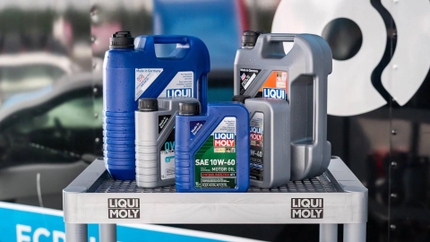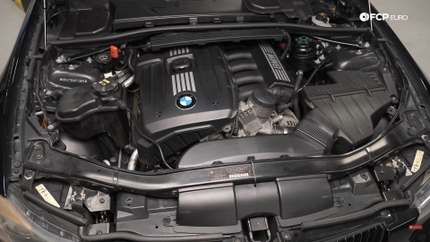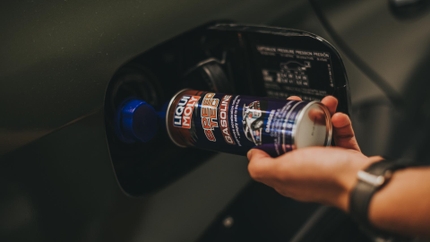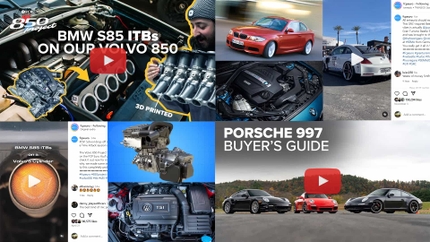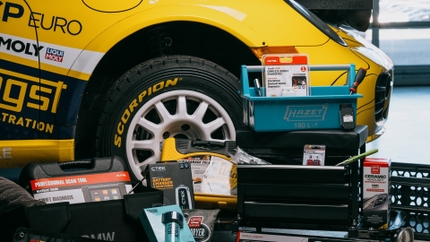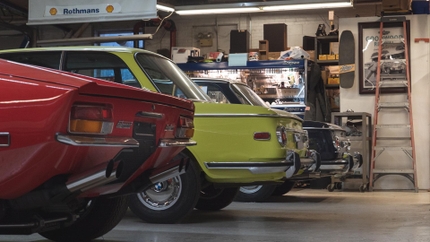- 09/08/2022
- 4 Min Read
- By: Anthony Sophinos
What Is A Clutch, How Does It Work, & How Does It Fail?
As the key coupling in any manual-transmission car, the clutch is a pivotal component enabling smooth and easy gear changes. And because it’s subjected to the whims of your left foot, this simple friction disc is no stranger to abuse. Of all the various ways you can shorten the lifespan of a clutch, smoking it may be one of the most common.
When we say smoke a clutch, we’re not talking about BBQ or cigarettes. Rather, the name derives from what usually happens when you bungle the three-pedal dance just right: aside from an odor that recalls burnt toast, you’re apt to see smoke start streaming out of the wheel wells. Spoiler alert: that’s not the effects of your attempt at an epic burnout.
While we can tell you easily enough how to avoid smoking a clutch, that won’t help you understand why this happens in the first place or how it can affect the lifespan of your left pedal. To do that, we’ll need to dig a bit deeper into exactly what a clutch is and why shift-it-yourself gearboxes require one in the first place.
What’s A Clutch, & Why Does My Car Need One?
The automotive clutch is essentially an on-demand coupling: its job is to mate the engine to the manual transmission until you push down the clutch pedal to initiate a gear change. When you push down the clutch pedal, you’re momentarily breaking this mechanical connection, cutting engine power from flowing through the transmission. When you release the pedal, the clutch once again links the engine and gearbox.

The reason cars require a clutch in the first place – indeed, why they need a transmission – is because internal combustion engines operate efficiently only in a narrow band of engine speed that’s known as the power band. To take advantage of that powerband at different road speeds, power is routed through the different gears in your transmission. Depending on which gear is engaged, the transmission can step up or step down the engine power according to your need for speed.
Here’s the thing with a transmission, though – you don’t want to change gears while engine power is actively flowing through it, as doing so would cause your gearbox components to quickly suffer some extreme wear and tear. To sidestep this, the engine needs to be temporarily decoupled from the transmission while you select a different gear. That’s where the clutch comes in.
Shop Clutch Kits At FCP Euro
How Does A Clutch Work On A Car?
A clutch works by briefly disengaging the engine from the transmission when the clutch pedal is depressed. Though that might sound like a complicated job, as far as automotive hardware goes, the clutch is a relatively simple device. It essentially consists of three main parts: a clutch disc, a pressure plate, and a diaphragm spring.
Clutch Disc
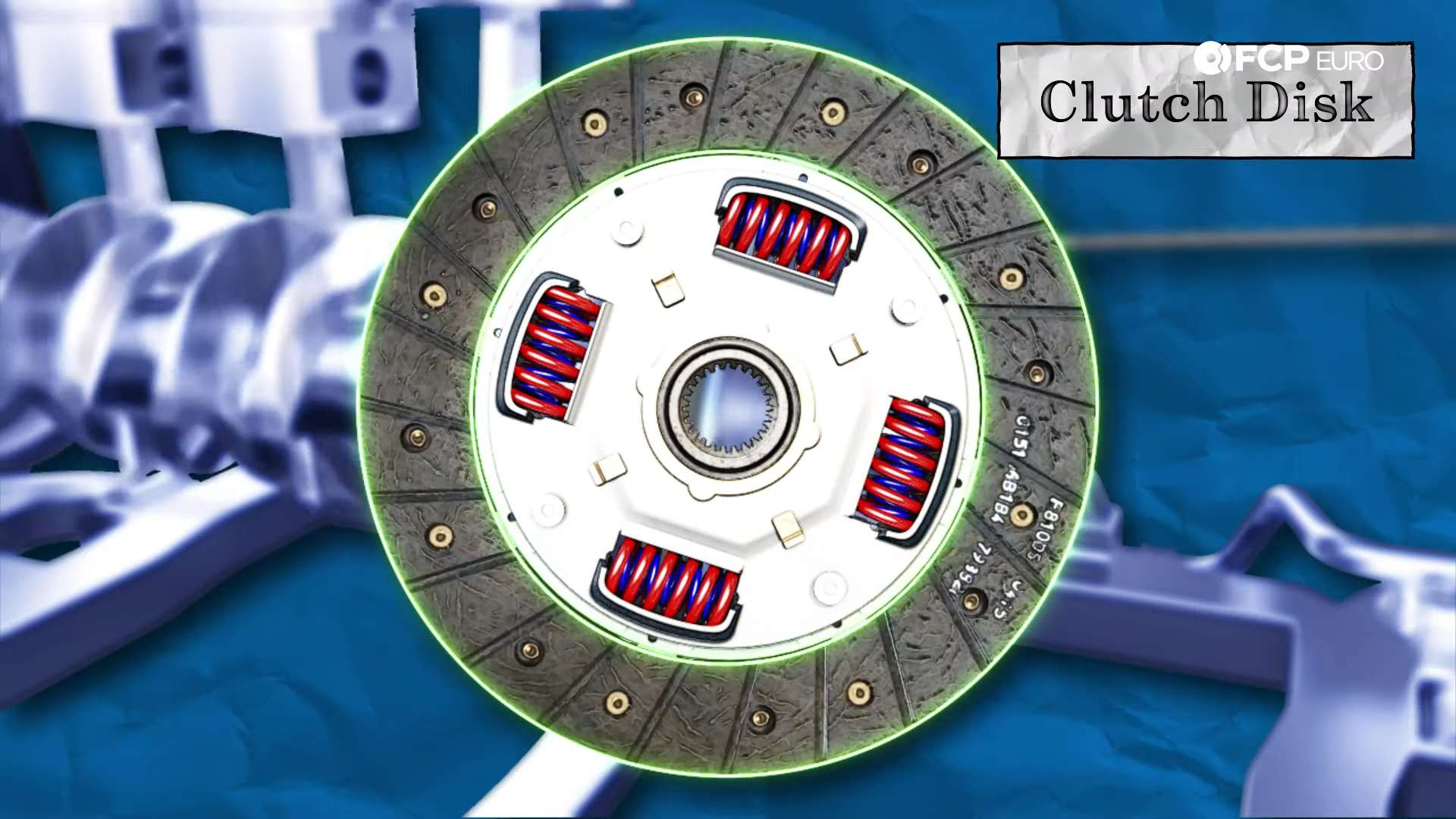
The clutch disc is located on the forwardmost portion of the clutch, facing the engine. Roughly resembling a large dinner or platter plate, its high-friction surface is designed to grip the flywheel, which is a big, heavy-toothed disc bolted to the end of the crankshaft. When the clutch disc is kissing the flywheel, power can flow smoothly from the engine to the transmission.
Clutch Pressure Plate
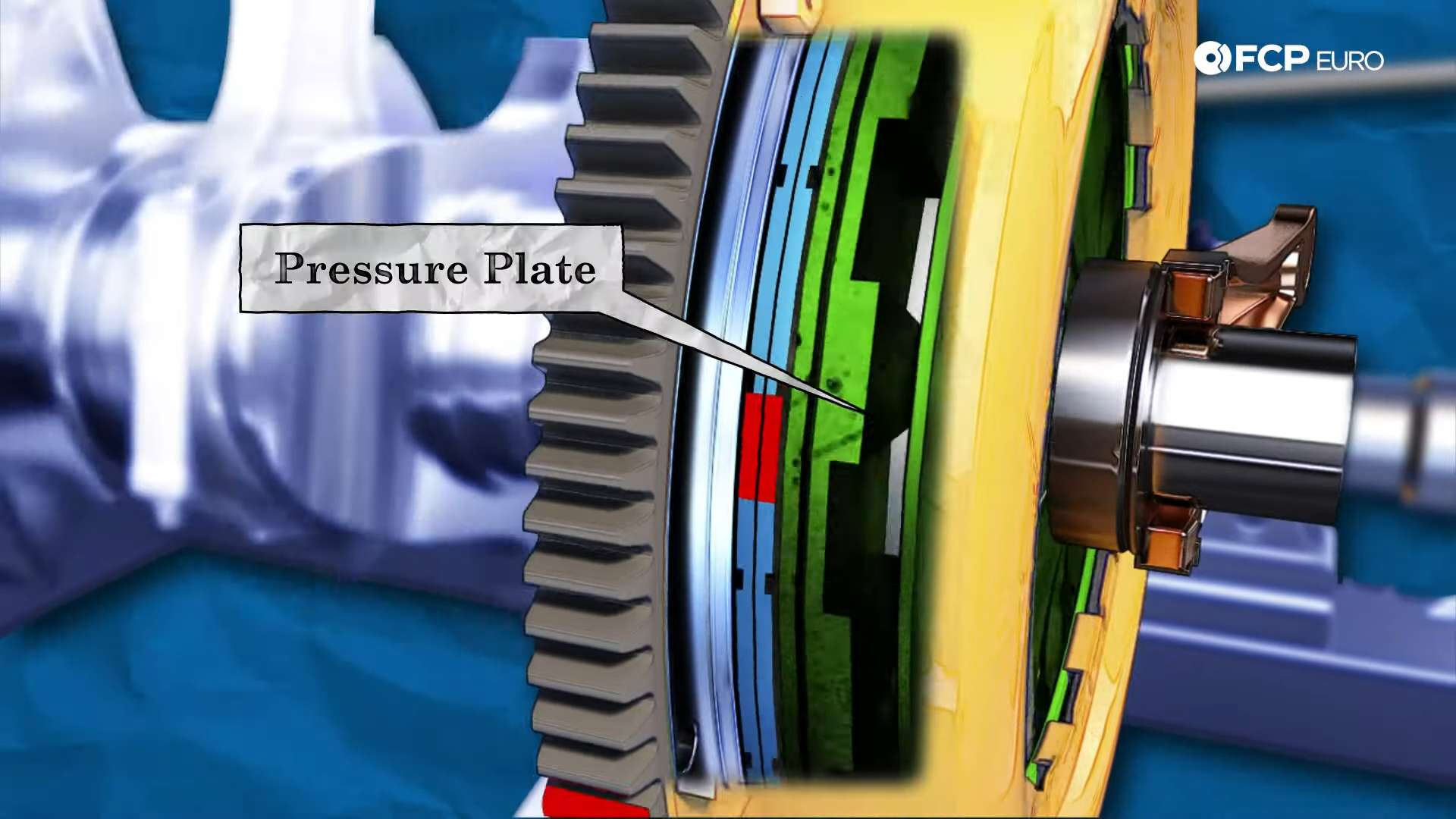
Behind the clutch disc is a pressure plate. As the name suggests, the pressure plate applies steady force to the clutch disc in order to keep it slammed up against the flywheel. Why does the pressure plate look like a forged donut? Because the middle is hollowed out for the diaphragm spring.
Clutch Diaphragm Spring
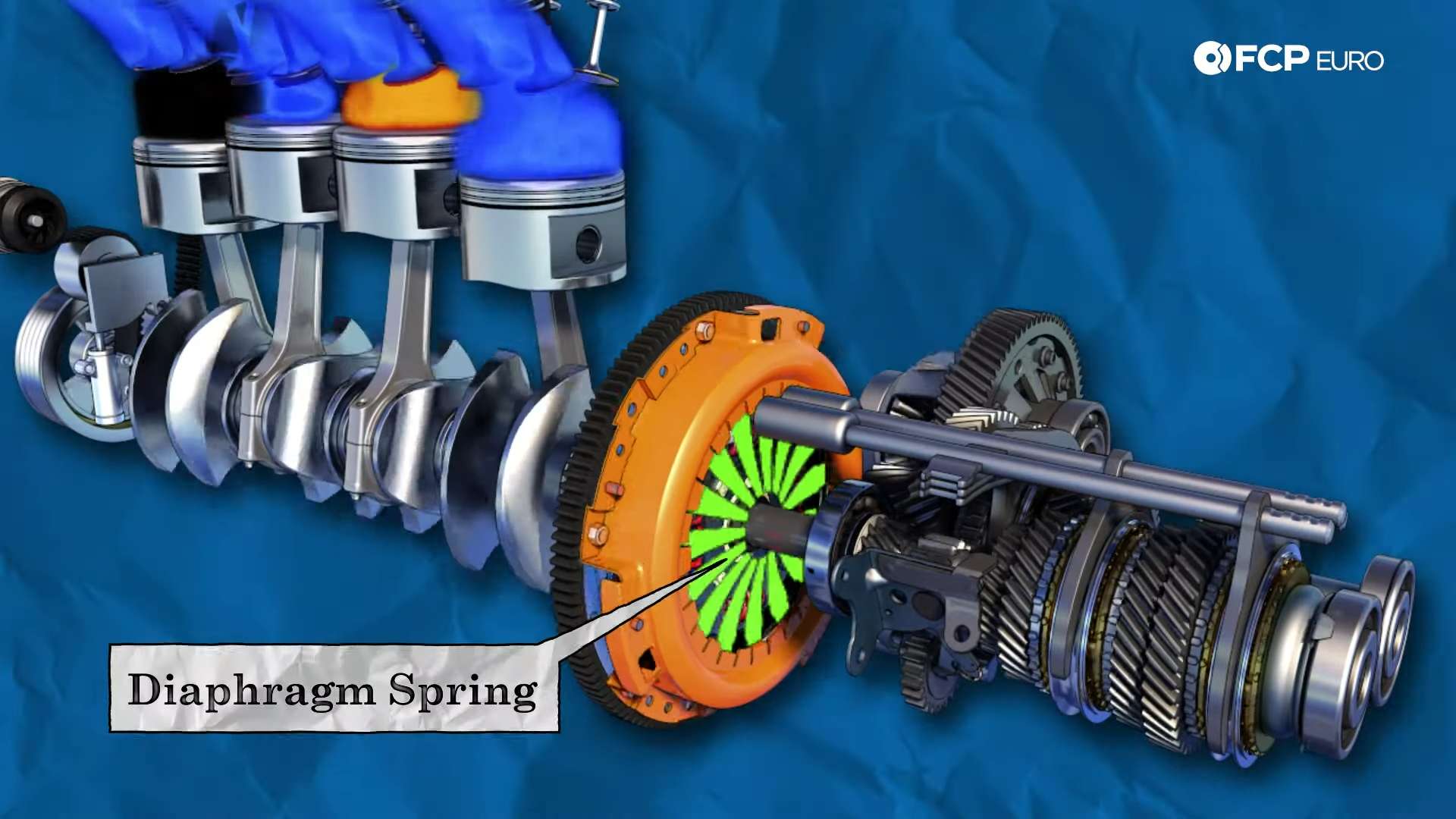
The diaphragm spring is the muscle behind the pressure plate’s clamping action. Unlike a traditional coiled metal spring, a diaphragm spring is a nearly flat circle. Its springiness is provided by a number of tapering metal prongs, known as fingers, which are mounted on the spring’s perimeter and point inwards. The fulcrum point is where the fingers attach to the outer ring; push in on the fingers, and the edge of the diaphragm spring flexes outward.
Here’s how it all comes together: first, you depress your clutch pedal. That sets into motion something called a clutch fork, which is a lever that pushes the fingers of the diaphragm spring forward toward the flywheel. This causes the outer edge of the diaphragm spring to flex in the opposite direction toward the transmission. As the outer portion of the diaphragm spring moves rearward, the pressure plate slackens its clamping force on the clutch disc. Relieved of this pressure, the clutch disc can now disengage from the flywheel, thus decoupling the engine from the gearbox.
How To Use A Clutch
It might seem like smooth clutch operation is simply a matter of fully depressing the clutch pedal every time you need to change gears. While that’s largely true, life isn’t always black and white. There may be times when you accidentally or purposely choose to do what’s known as riding the clutch–keeping sustained partial pressure on the leftmost pedal.
By keeping the clutch lightly but not fully engaged, you can delicately feather a bit of engine power through to the wheels–perfect for those inevitable situations like creeping along in rush-hour traffic on getting started on a steep uphill. That said, riding your clutch is generally to be avoided if possible. Why? Because it’s an easy way to smoke your clutch.
What’s A Smoked Clutch?
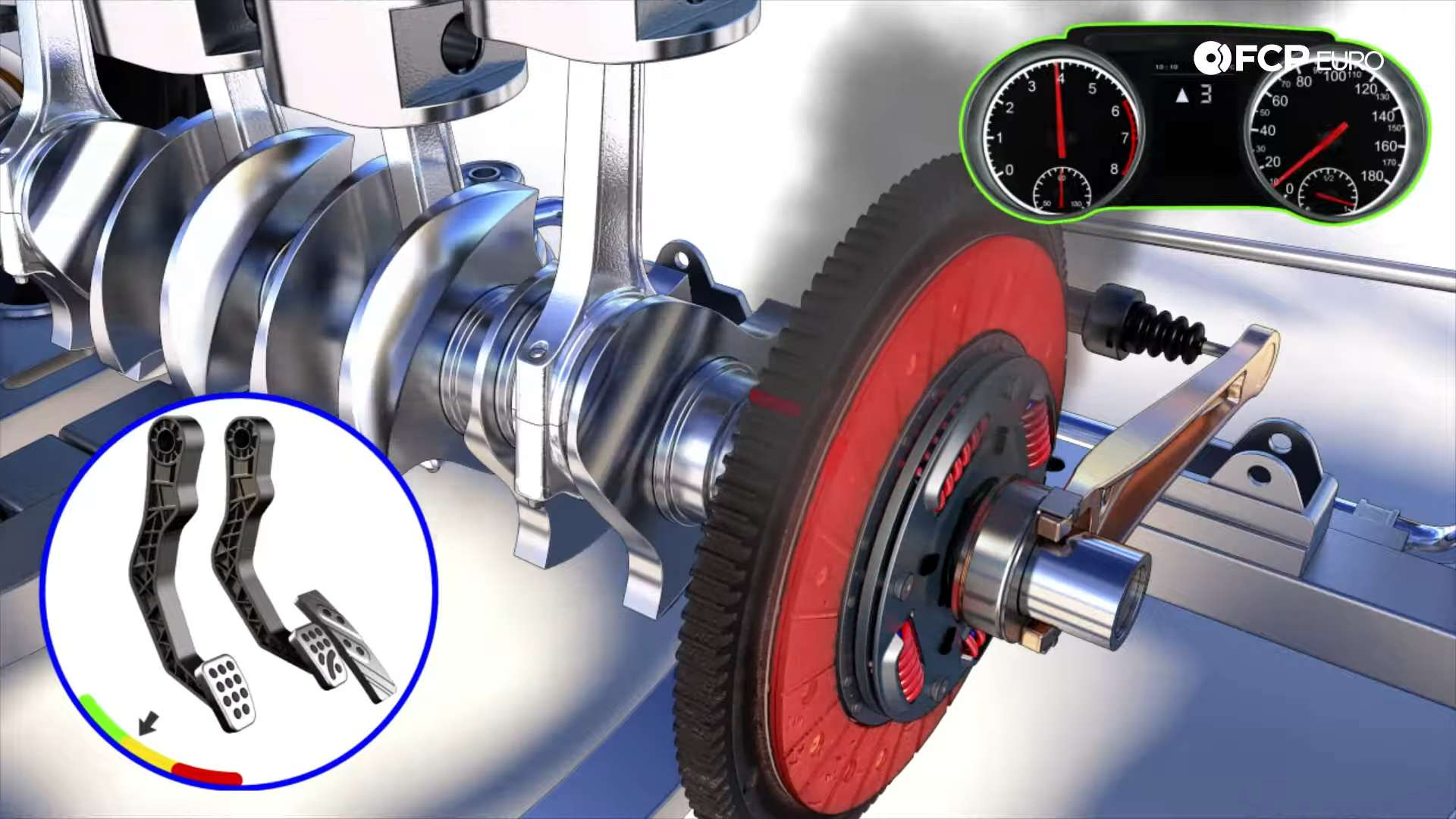
A clutch is smoked when too much power is allowed to flow through it during a partially engaged state. In plain English, it’s caused by mercilessly riding your third pedal, which forces the clutch disc to somewhat but not entirely decouple from the flywheel.
Why is that bad? Because the heat generated from this partially engaged position can quite literally torch the friction material that enables your clutch to firmly couple to the flywheel. You’ll know when it’s getting cooked when you start smelling burnt toast through the air vents and see smoke sneaking out from under the rocker panels and wheel wells.
Common Ways To Ruin A Clutch
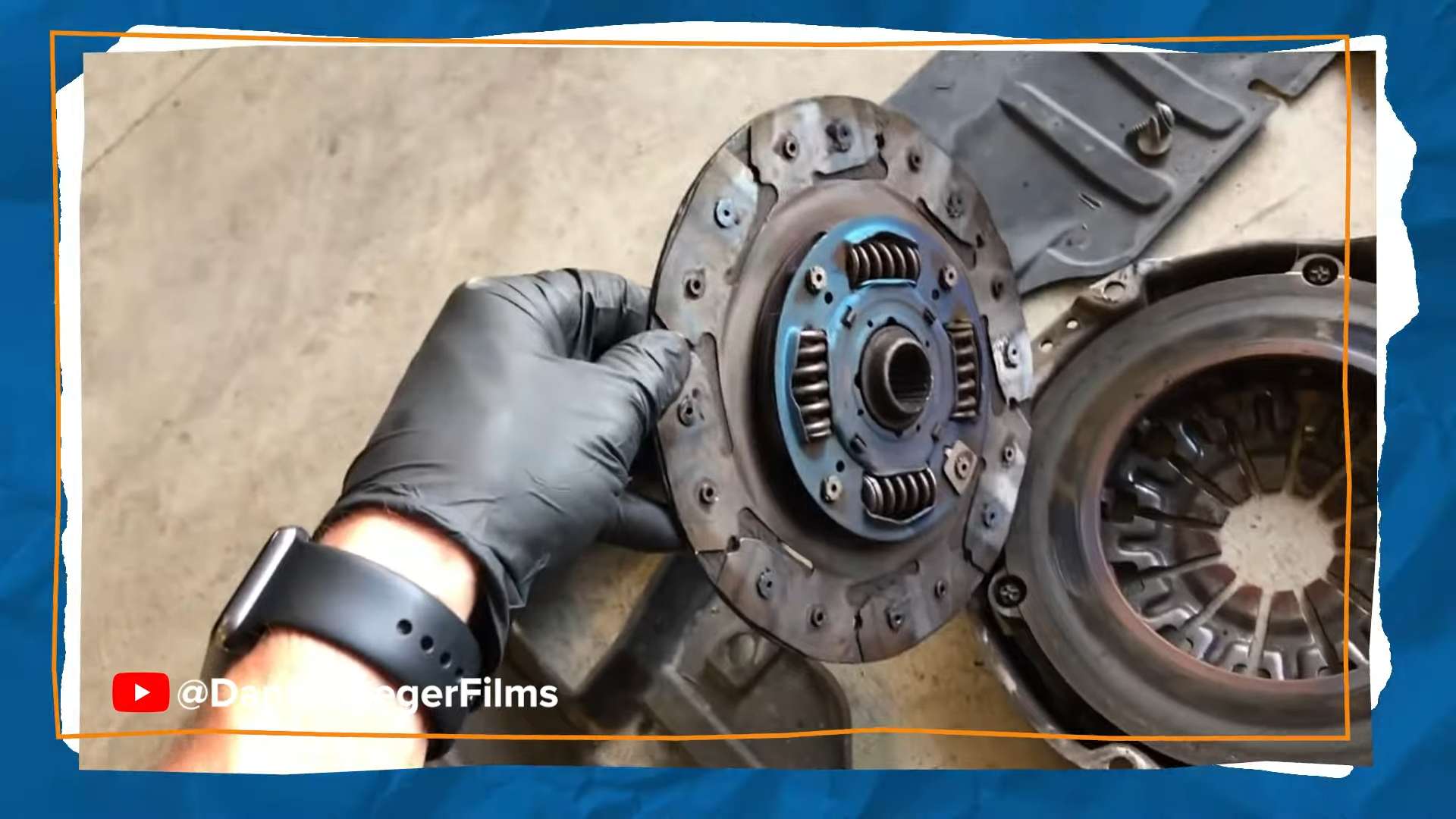
The worst thing you can do is treat the clutch like a footrest. Ask anyone who’s tried it – it’s the easiest, fastest way to burn up the friction disc to the point of failure. Riding a clutch this aggressively can quite possibly condense thousands of miles of wear into a season of driving – and eventually leave you footing a major repair bill that would have otherwise been avoided.
You can also smoke a clutch by giving the engine major throttle without fully backing off the third pedal. You might see this with panicked newbies facing their first steep hill start. As they remove their right foot from the brake, the car begins to roll backwards–and they instinctively punch the gas without hastening their release of the clutch.
It’s a natural reaction for any greenhorn or flustered driver, but it usually leaves the engine singing out at high RPMs while the clutch disc burns in a half-engaged state of purgatory. A few of these starts in quick succession could generate enough heat and friction to smoke a clutch, though a quick cool-down period should likely prevent any major damage from occurring.
Clutch Failure: How Long Does A Clutch Last?
Though these couplings are pretty hardy, anytime you smoke a clutch, you’re shortening its lifespan. The worst offenders–someone whose left foot is practically glued to the third pedal even during easy cruising – might see total failure in as little as 20,000 or 30,000 miles.
You’ll know when the clutch completely fails because your car likely won’t be operable, but there are warning signs well before that. At first, you might notice slippage, which is when the clutch doesn’t seem to firmly clamp against the flywheel as it should. This will likely result in symptoms like laggy acceleration or inconsistent RPMs even while you’re traveling at a steady speed, something caused by inconsistent power flow through the failing clutch.
As the slippage worsens, these symptoms become more apparent. At some point, the clutch pedal will start behaving funny; it will likely grow increasingly spongy in feel, and eventually, you might even notice a different engagement point – the moment while depressing the clutch pedal when you sense the friction disc actually making contact with the flywheel.
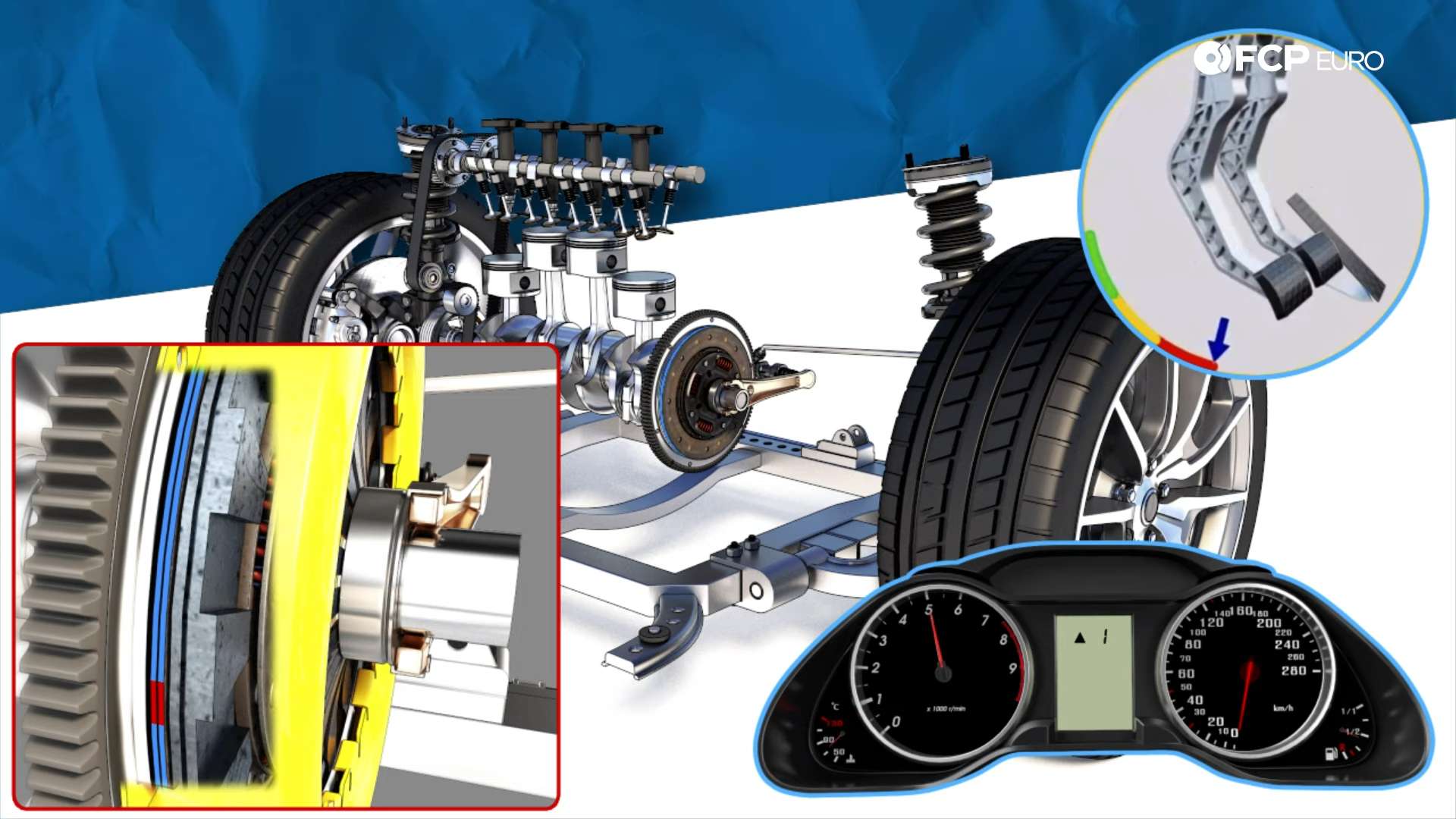
Ignore all these symptoms, and total failure will occur, which is when the friction material on the clutch disc almost entirely wears away. This usually manifests in one of two ways. The more inconvenient of the two is when the pressure plate can’t keep the disc securely pressed against the flywheel, causing a permanent severing of the engine/gearbox connection. Since power can’t flow into the transmission and onto the drive wheels, your car is as good as bricked. The only way you’re going anywhere is if you start pushing or call in a AAA tow.
If you’re a bit luckier, the clutch might fail in the engaged position. When this happens, your transmission won’t decouple from the flywheel even if you depress the clutch pedal. Though the car is technically driveable, changing gears won’t be easy: you’ll have to float shift or shift without a clutch. Don’t expect to be driving anywhere but your favorite repair shop – if you can drive it at all.
Final Thoughts
The clutch is a bit of an unsung hero: while the engine and transmission hog the spotlight, the one component allowing those two to work in such seamless tandem is all but invisible. Yet were it not for the clutch, our stick-shift cars would be hardly more than yard art. The humble contraption of friction disc, pressure plate, and diaphragm spring are the key to enjoying those perfect downshifts on that favorite winding backroad.
It’s not always perfect downshifts and backroads, though. Your clutch can handle practically untold levels of abuse, but it isn’t infallible. Ride it a bit too hard or treat it a bit too ruthlessly, and you’ll find yourself footing a painfully large repair bill. Before you go re-enacting your favorite scene from Fast and Furious, consider this a friendly reminder that clutch jobs ain’t cheap.
Luckily, treating your clutch with a bit of respect and refraining from riding it mercilessly when not in certain low-speed situations is a foolproof way to extend its longevity and prevent it from picking up a smoking habit. To paraphrase the CDC, smoking a clutch can cause automotive health problems. Refrain from it, and your clutch should outlast your ownership by a wide margin.

